5-Min Science: Alternating Breathing Increases Functional Connectivity
- Fred Shaffer
- Oct 7
- 3 min read
Updated: Oct 12

This post summarizes the open-access Frontiers in Human Neuroscience article, "An alternating breathing pattern significantly affects the brain functional connectivity and mood states," by Duan and colleagues (2025).
What Is The Takeaway?

What Is The Science?

How Did They Do It?

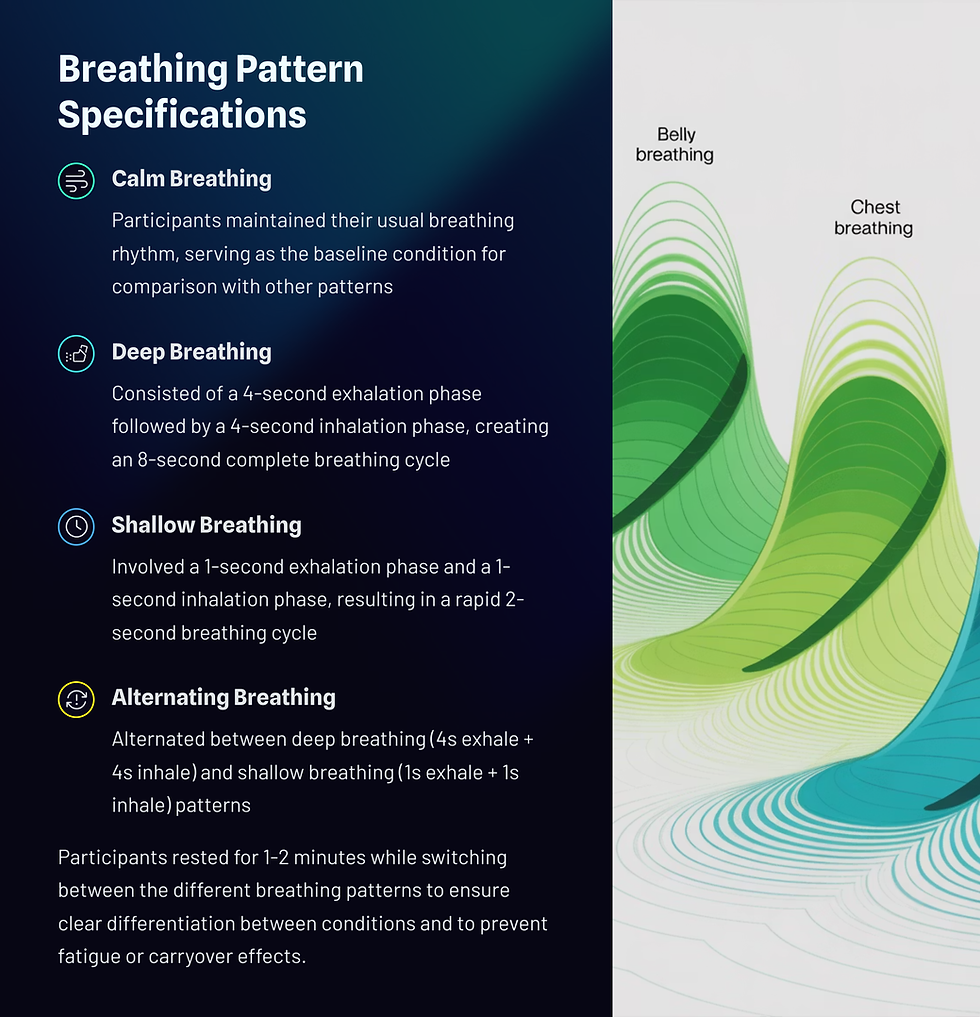
What Did They Find?


What's The Impact?
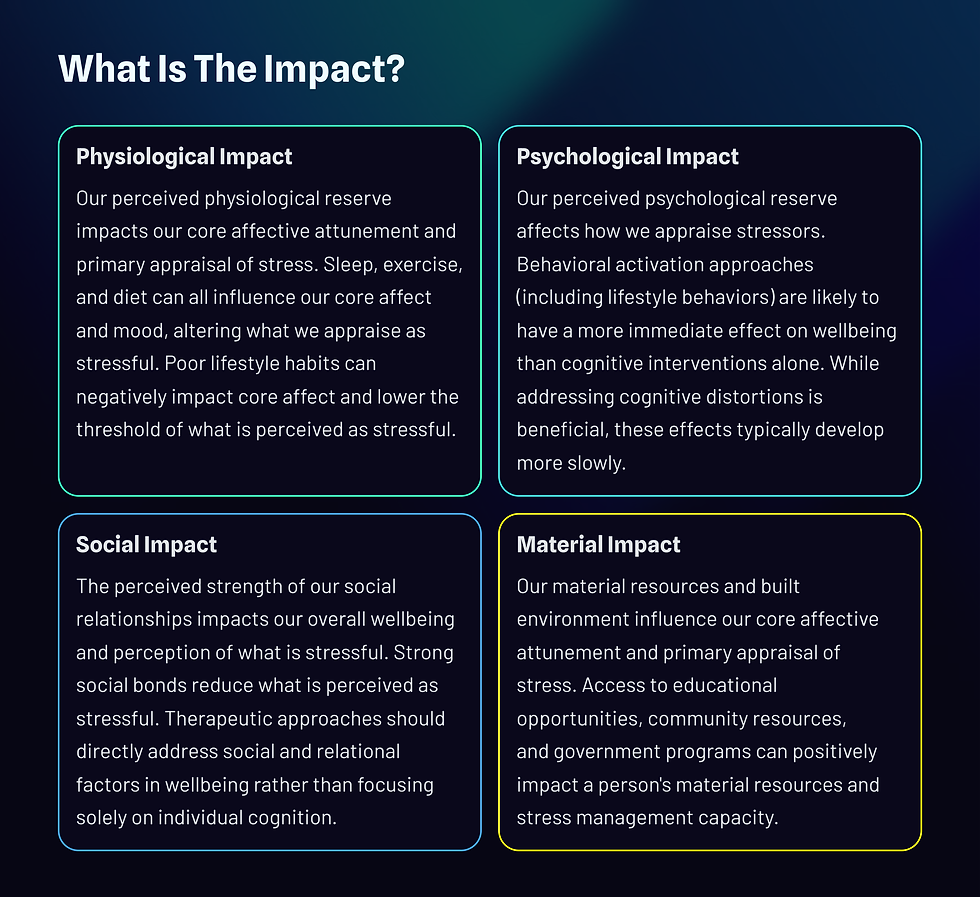
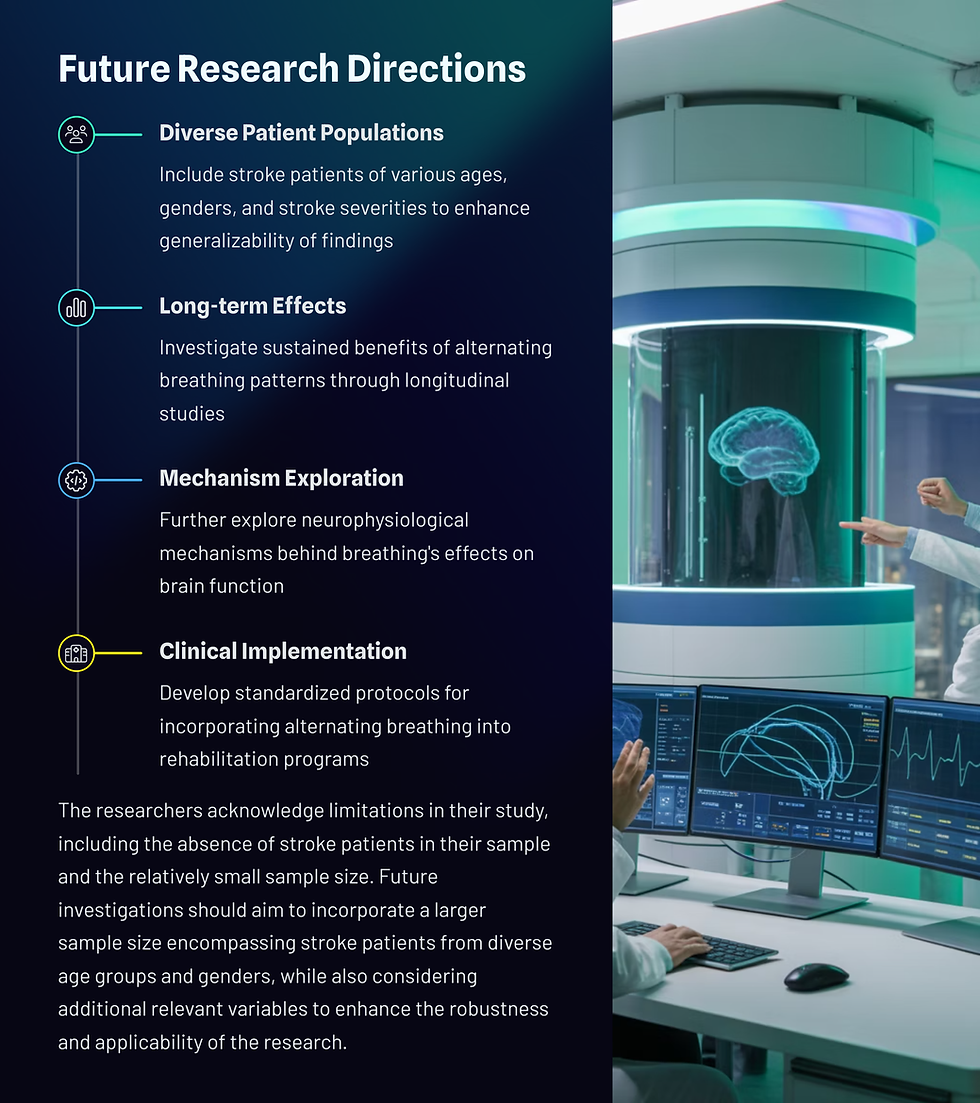
Why Should We Be Cautious About Deep Breathing?
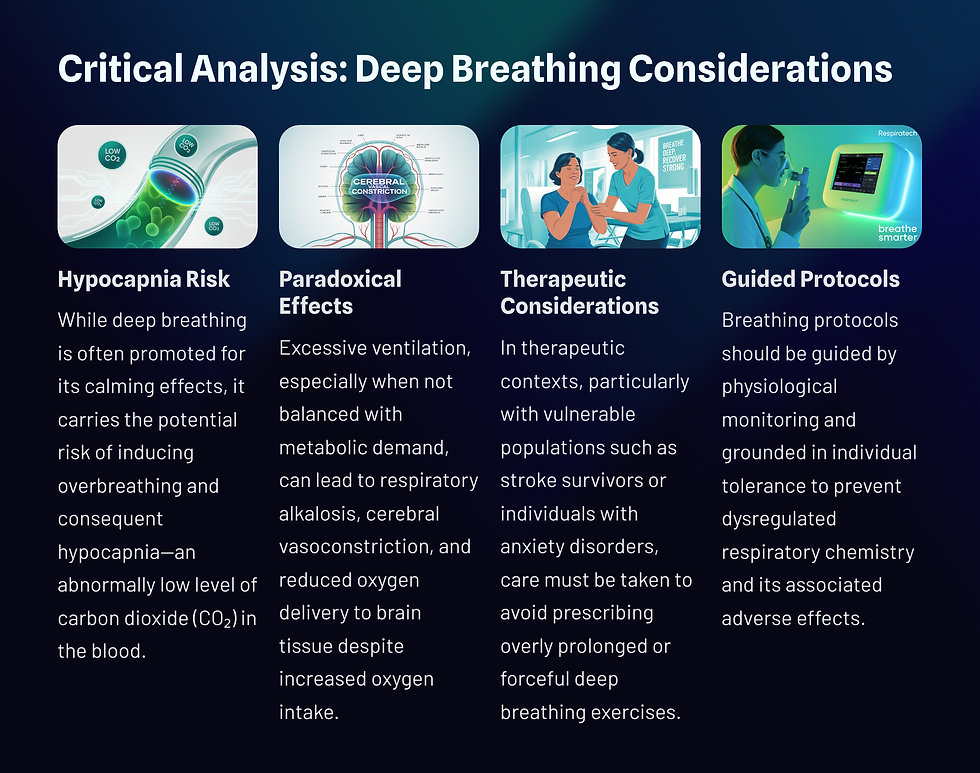

Glossary
affective neuroscience: the branch of neuroscience that studies the neural mechanisms of emotion, including emotional regulation and processing.
alternating breathing: a structured respiratory pattern that cycles between deep and shallow breathing, often used to modulate brain activity and autonomic function.
autonomic coherence: a physiological state characterized by synchronized activity between heart rate, respiration, and other autonomic functions, indicating optimal regulation.
autonomic flexibility: the capacity of the autonomic nervous system to adapt efficiently to internal and external stimuli, often reflected in high heart rate variability.
autonomic nervous system: the part of the peripheral nervous system responsible for regulating involuntary physiological functions such as heart rate, digestion, and respiration.
carryover effects: residual influences from one experimental condition that persist and potentially confound subsequent conditions in within-subjects designs.
cerebral vasoconstriction: the narrowing of blood vessels in the brain, which can reduce cerebral blood flow and oxygen delivery, often triggered by low carbon dioxide levels.
deep breathing: a controlled respiratory pattern involving slow and full inhalations and exhalations, typically enhancing parasympathetic activity and vagal tone.
emotional regulation: the ability to modulate one’s emotional state, reducing volatility and maintaining affective stability in response to internal or external stimuli.
executive function: a set of cognitive processes—including working memory, cognitive flexibility, and inhibitory control—that regulate goal-directed behavior.
facial expression analysis: the measurement and interpretation of facial muscle activity to infer emotional states, often used in psychophysiological studies.
functional connectivity: a measure of the statistical dependence or synchronization between spatially separate brain regions during rest or task performance.
functional near-infrared spectroscopy (fNIRS): a non-invasive imaging technique that measures cortical brain activity by detecting changes in oxygenated and deoxygenated hemoglobin.
heart rate variability (HRV): the variation in time intervals between heartbeats, reflecting autonomic nervous system function and adaptability.
hyperventilation: a condition of excessive breathing that leads to decreased levels of carbon dioxide in the blood, potentially causing physiological and psychological symptoms.
hypocapnia: a state of reduced carbon dioxide in the blood, commonly caused by overbreathing, leading to symptoms such as dizziness and anxiety.
neural oscillations: rhythmic patterns of neuronal activity in the brain, often associated with cognitive and emotional processes.
neuroplasticity: the brain’s ability to reorganize itself by forming new neural connections, particularly following injury or in response to learning.
oxygenated hemoglobin: hemoglobin that is bound to oxygen, commonly measured by fNIRS as an indicator of local brain activation.
parasympathetic activity: the branch of autonomic activity associated with rest, digestion, and recovery, often activated by slow or deep breathing.
prefrontal pole: the most anterior part of the prefrontal cortex, involved in high-level cognitive functions such as planning, self-regulation, and social cognition.
resonance frequency breathing: a specific breathing rate (usually around 6 breaths per minute) that maximizes HRV and baroreflex function.
respiratory alkalosis: a disturbance in acid-base balance caused by excessive breathing, leading to elevated blood pH due to low carbon dioxide levels.
respiratory rhythm: the temporal pattern of inhalation and exhalation cycles that can influence neural activity and autonomic regulation.
SDNN: the standard deviation of normal-to-normal heartbeats, a time-domain measure of heart rate variability that reflects overall autonomic balance.
shallow breathing: a rapid and low-volume breathing pattern characterized by short inhalation and exhalation cycles, often increasing sympathetic activity.
sympathetic activity: the branch of autonomic activity involved in arousal, stress, and energy expenditure, typically activated during shallow or rapid breathing.
temporal lobe: a region of the brain involved in auditory processing, language, and social cognition, often influenced by respiratory-driven neural activity.
washout period: a rest interval between experimental conditions used to minimize residual physiological or psychological effects from previous tasks.
Reference
Duan, Y., Guo, X., Ren, B., Liu, F., Li, Y., Liu, F., Xu, F., & Huang, M. (2025). An alternating breathing pattern significantly affects the brain functional connectivity and mood states. Frontiers in Human Neuroscience, 19, 1539222. https://doi.org/10.3389/fnhum.2025.1539222
About the Author

Fred Shaffer earned his PhD in Psychology from Oklahoma State University. He earned BCIA certifications in Biofeedback and HRV Biofeedback. Fred is an Allen Fellow and Professor of Psychology at Truman State University, where has has taught for 50 years. He is a Biological Psychologist who consults and lectures in heart rate variability biofeedback, Physiological Psychology, and Psychopharmacology. Fred helped to edit Evidence-Based Practice in Biofeedback and Neurofeedback (3rd and 4th eds.) and helped to maintain BCIA's certification programs.
Support Our Friends
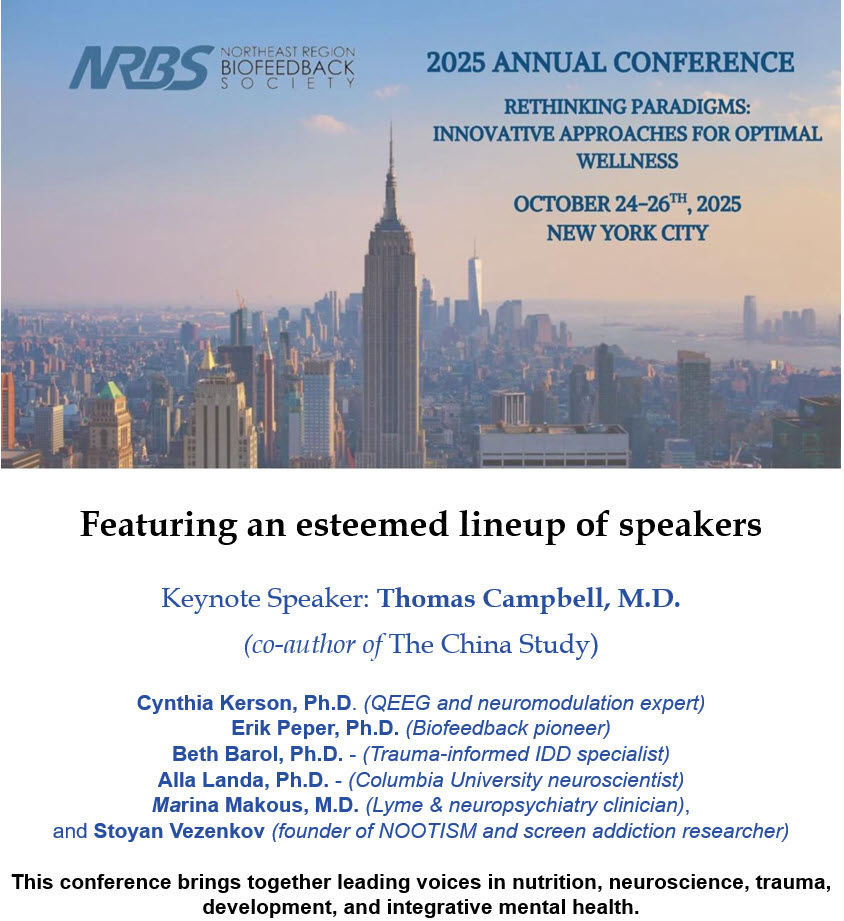
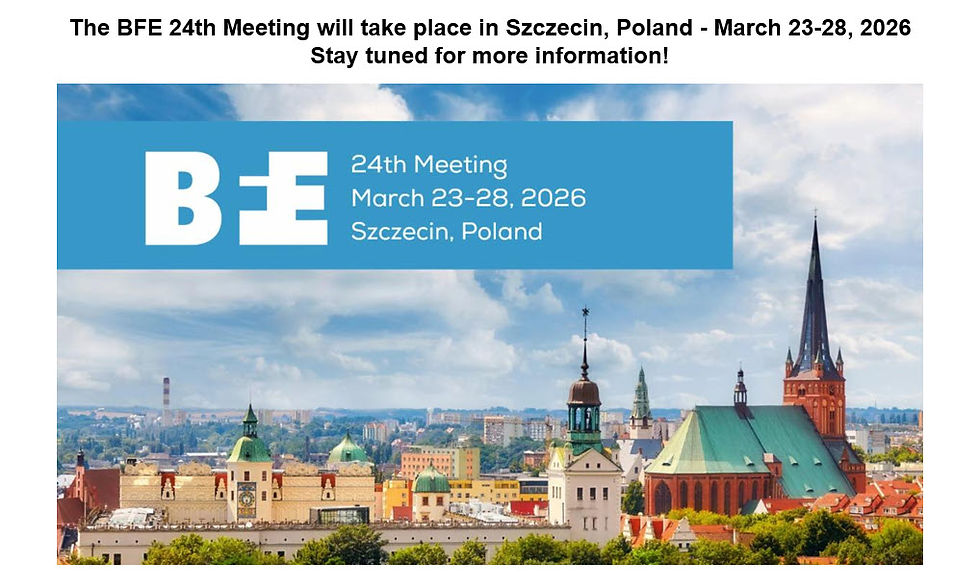






Comments